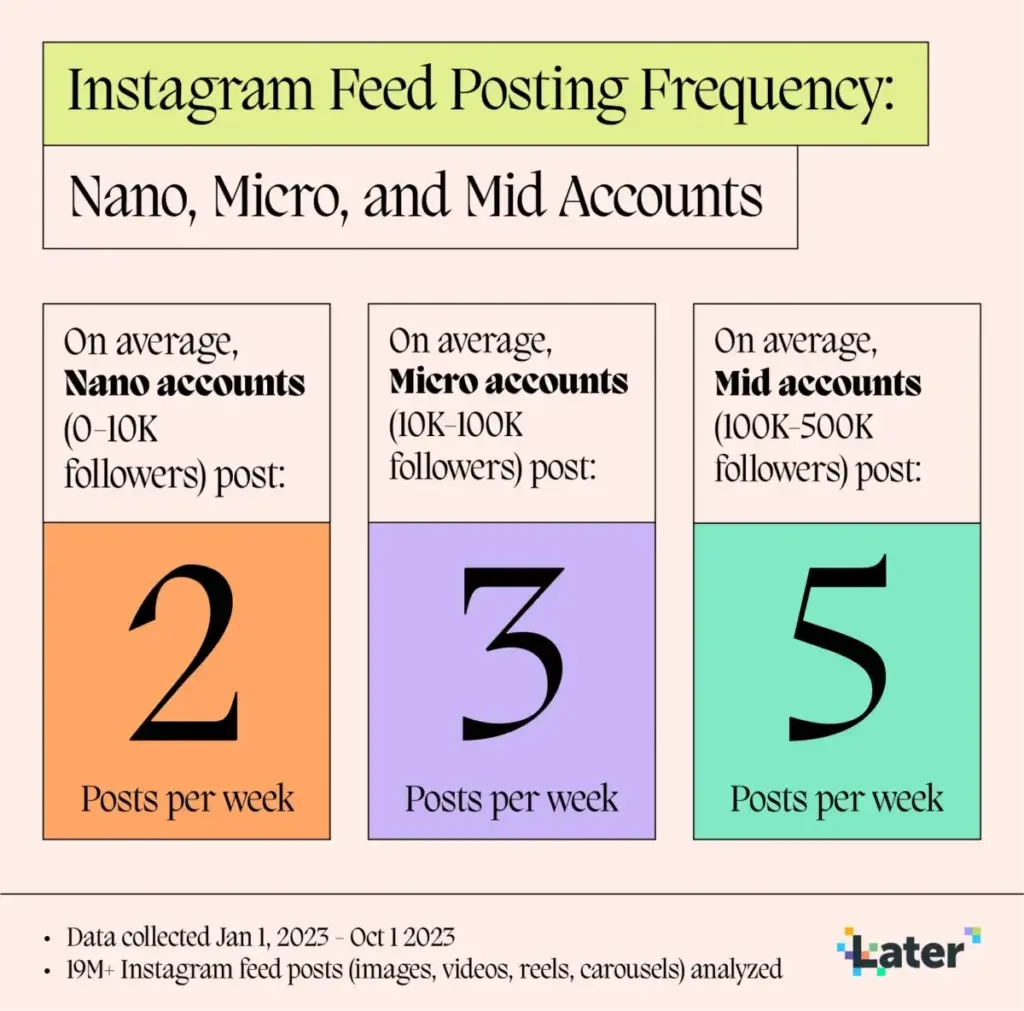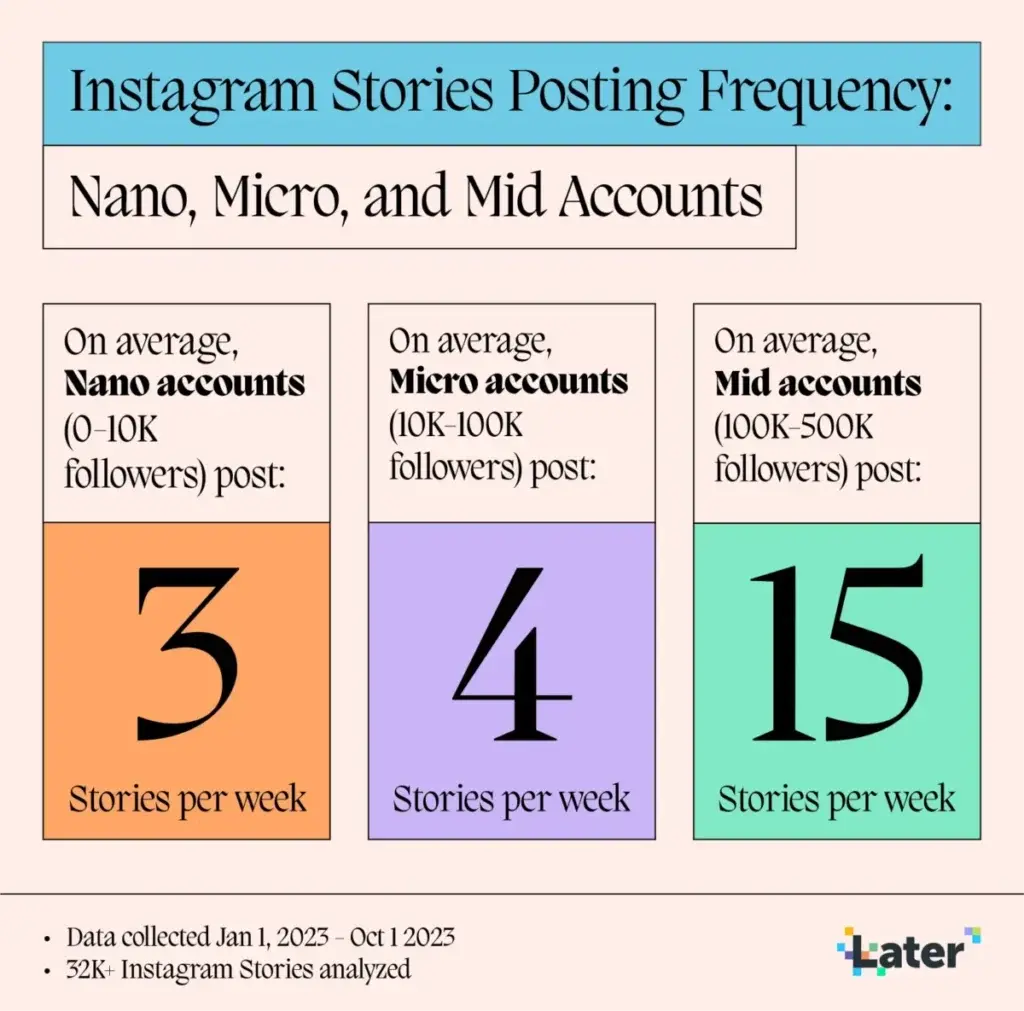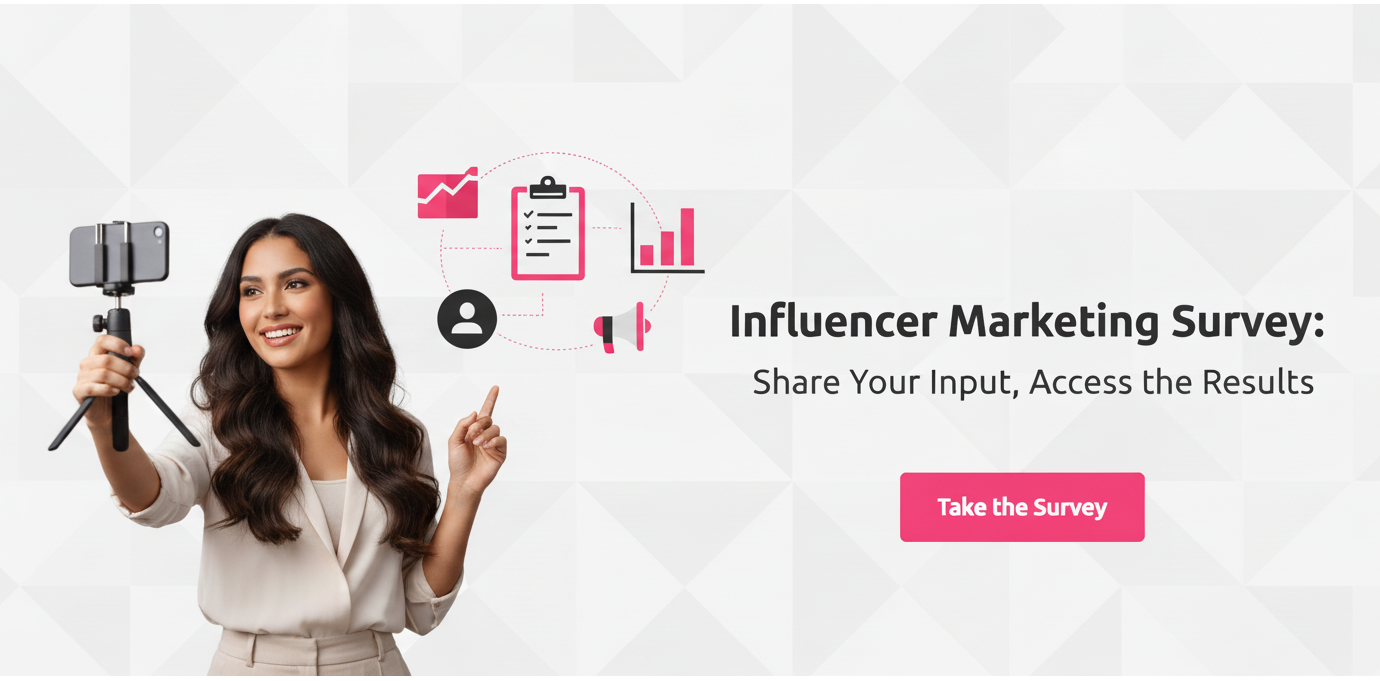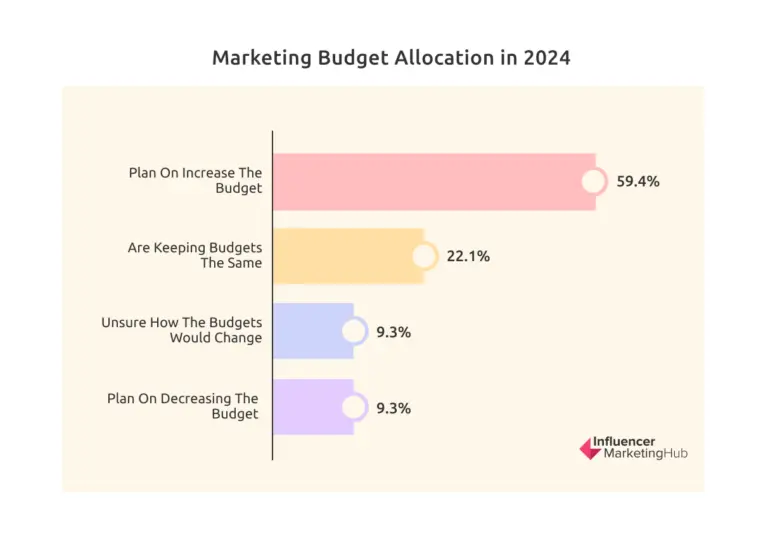With over 200 million businesses, Instagram is among the most lucrative platforms for marketing your venture. The social media platform has over two billion monthly active users and a host of marketing tools, like Instagram ads and shoppable posts, to help businesses connect with their target audience.
Since it's a visual platform, Instagram's marketing strategy is largely centered on video creation and storytelling for maximum engagement. The introduction of Instagram Reels and Threads has further broadened the scope of Instagram marketing.
In this guide, we discuss tips to improve your Instagram marketing strategy based on the latest trends and updates.
What Is Instagram Marketing?
Instagram marketing means using Instagram to market your product or service. It's just like marketing on any other platform, except that you use Instagram's unique features, like hashtags and stories, to reach out to your audience.
Why Use Instagram for Marketing
There are many reasons Instagram stands out as a suitable marketing platform. For starters, the platform has an engaged user base that spends around 33 minutes on the platform every day.
That's enough time for a brand to catch the attention of potential customers. To add, most people on Instagram follow at least one brand, so you have an audience that is already interested in what businesses have to offer.

Source: offers.hubspot.com
Instagram users not only follow brands but also search for them actively. A Google executive reported that according to the company's own research,
"..something like almost 40% of young people when they're looking for a place for lunch, they don't go to Google Maps or Search. They go to TikTok or Instagram."
Instagram's visual nature allows for better storytelling, which seems to have become the cornerstone of marketing in today's time. Plus, the platform offers a myriad of marketing tools, including but not limited to an analytics dashboard, shoppable posts, influencer partnerships, collaborations, and ads.
Marketers who already use social media platforms for their marketing campaigns are happy with Instagram's return on investment (ROI). In fact, 16% of respondents in a survey said that Instagram offers the highest ROI in terms of social media marketing, second only to Facebook, which was chosen by 22% of marketers.

Social media platforms with the largest return on investment (ROI) according to B2B marketers
Which Instagram Features Can You Use for Marketing?
Instagram is heavily focused on photos and videos. So, the features that it offers for marketing are also centered around this aspect.
Instagram Stories
These are short videos or images that disappear after 24 hours. Instagram Stories have been a huge hit and are perfect for showing behind-the-scenes content, special offers, event coverage, and sneak peeks.
You can also add interactive elements to your stories, like polls, quizzes, and countdowns. Brands can also run Story Ads that appear between users' stories.
Carousel Posts
A carousel post allows you to add up to 10 images or videos in a single post, which users can swipe through. It's a great way to show a new collection of user testimonials. Learn how to use Instagram carousels in your marketing here.
Instagram Reels
Reels are short, entertaining videos that can be edited with music and other creative effects. Statista data shows that Reels get 243 likes, 8 comments, and 28 saves on average. That makes Reels suitable for showing your brand's personality or new offerings.
For example, ScrubDaddy uses Reels to show the quirky nature of its brand while incorporating its products. Most of their Reels have over 100k views.
Influencer Marketing
Our Influencer Marketing Benchmark Report found that 46.7% of brands turn to Instagram for influencer marketing. Businesses can partner with relevant creators in their respective niches to inform and engage potential customers.
Daniel Wellington, a watch brand, works with influencers and UGC creators to promote its new items.
Instagram Threads
Threads is Instagram's competitor for X. In December 2023, just a few months after its release, Threads became the sixth most downloaded Apple App Store and Google Play Store app.
It also reached 100 million users in just a week of its release, breaking the previously-held record by ChatGPT. It's likely that Meta will continue to push Threads just like it did with Reels.
So, brands will have to incorporate Threads into their overall Instagram marketing strategy by using them for product updates, content snippets, company announcements, and polls.
Netflix is already killing it on Threads, posting updates about upcoming shows and following pop culture trends to keep its following of 6.6 million engaged.
Instagram Live
Instagram Live is a live streaming feature that allows users to broadcast live video content to their followers and receive real-time interaction through comments and reactions. You can use Instagram Live for product launches and Q&A sessions.
How to Create Your Instagram Marketing Strategy?
Now, you're all set to learn how to put together an Instagram marketing strategy. Let's dive in.
Step 1: Define Your Marketing Goals
Yes, it may come off as a no-brainer, but it's important to clearly define your marketing goals before you start creating your strategy.
Ask yourself what you are hoping to achieve through Instagram marketing. Instagram can have multiple purposes. For example, some brands focus on its social selling side, while others use it to increase brand awareness.
There's no ''correct'' way to answer this question. Every brand's goals will be unique, and their Instagram use cases will be in accordance with them.
For example, Maybelline uses Instagram to tell people about its new products and sales. You'll see a lot of influencer and user-generated content on the platform, but the underlying goal is always to sell and advertise.
For example, when the company came out with a new mascara, it created a host of posts, like Reels, images, and influencer content around it.
Similarly, Maybelline heavily advertised its Summer Carnival on Instagram with a series of posts. The makeup company even pinned the post about the carnival's announcement to ensure people coming to its profile would see it.
On the other hand, National Geographic's Instagram posts are predominantly information. The organization uses its Instagram presence to provide value to users by sharing stunning images and interesting facts about the world. These posts eventually drive traffic to Nat Geo's website and channel.
On the other hand, National Geographic's Instagram posts are predominantly information. The organization uses its Instagram presence to provide value to users by sharing stunning images and interesting facts about the world. These posts eventually drive traffic to Nat Geo's website and channel.
Fresh Content Society, a B2B digital marketing agency, uses Instagram to show its expertise to its followers. The marketing agency posts about its new clients, case studies, events, webinars, and milestones.
Step 2: Conduct a Competitive Analysis
Take a look at your competitors and identify what they're doing. You can replicate or take inspiration from their strategy.
Here's what to look at:
- Types of Content Used: Take note of the types of posts your competitors use on Instagram — Reels, images, carousels, stories, or lives?
- Frequency of Posts: How often do they post on Instagram? Do they have a set schedule, or do they post sporadically?
- Engagement and Follower Count: What is the engagement rate on their posts? Use our Instagram engagement calculator for it. For example, we calculated Chick-fil-A's Instagram engagement to be 0.39%. As a food place, you can calculate the engagement rates of a few of your competitors. Then, follow the Instagram strategies of competitors with the highest engagement.
- Content Themes/Topics: What are the main themes or topics that your competitors focus on in their posts? For example, if you're a retail store, look at Target's Instagram page. It's a mix of influencer content, fun posts, popular challenges, and product info.
- Influencer Collaborations: Are your competitors collaborating with influencers to promote their products/services? If so, who are these influencers, and what type of content are they creating?
Step 3: Create an Instagram Content Calendar
Draw up a plan for the types of content you want to post on Instagram and when. Some types of content you can post are:
- Product or service highlights
- Reels
- Behind-the-scenes content
- Challenges and trends
- Influencer collaborations
- Promotions
- User-generated content
- Fun or entertaining posts
HubSpot has an easy-to-use social media content calendar template that you can download. You can also create your own using a spreadsheet.
We have a guide on ideas to fill up your content calendar with to ensure that you have a good variety of posts.
Step 4: Select a Brand Personality
You can always mix up the type of content you create. But your brand personality should be consistent. For example, do you want to be fun and quirky or professional and informative?
Take Pottery Barn as an example. Their content has a sleek and sophisticated vibe, with a focus on home decor and interior design inspiration. Even their user-generated content matches the all-white and beige aesthetic, ensuring a cohesive brand personality.
Similarly, The New Yorker Cartoons have a black-and-white minimalist aesthetic with witty captions, showing a more intellectual and humorous brand personality. Every once in a while, they post something in color. But they never stray too far from their established brand persona.
Tide Laundry doesn't necessarily stick to one type of content, but its Instagram is still super cohesive due to its use of brand colors (orange, yellow, blue, and white) and playful tone.
Take these brands as inspiration to create your own brand personality. You can also base your brand persona on your target audience. For example, as a B2B company, you may want to be more serious and professional, while a B2C company catering to millennials and Gen Z may have more room for creativity.
Step 5: Optimize Your Instagram Bio
Finally, make sure your bio tells potential followers who you are and what your brand is all about. It should also include a link to your website or blog, making it easy for users to find more information or make a purchase.
Pacsun's Instagram bio is a good example. They've got their Threads handle in the bio, along with their TikTok handle. There's also a link to Pacsun's shop. In the description, the brand simply mentions ''curated in Los Angeles,'' which reinforces its brand persona of being a trendy and laid-back clothing company.
Betterup, a career coaching and mental wellness platform, has a concise and catchy bio that tells users exactly what they do:
''Building mental fitness, careers, and communities. So you can be your best — at work and in life. ⚡️''
They also have a Linktree link that directs users to multiple links such as their website, app, partnership programs, and important pages. You can do the same if you have multiple links to share with your followers.
Besides basic elements, you can also use emojis and hashtags to make your bio more eye-catching. If you're a local business, you can also add your location.
For example, Disney has added its location and a short intro in its bio, along with a link to its website. They've also used the ''magic'' emoji, which goes with the brand's tagline.
Tips to Update Your Instagram Marketing Strategy
The key to making Instagram work for your goals is to keep jumping on trends and updating your marketing strategy. With that in mind, here are some tips to help you stay on top of your Instagram game.
1. Include Threads In Your Strategy
Meta plans to push Threads to its Instagram users, and it's wise if you hop on now. In fact, a top exec at the company claimed that they released Threads because of the demand for it after Musk's takeover of X (formerly Twitter).
Chris Cox, the aforementioned exec, said,
"We've been hearing from creators and public figures who are interested in having a platform that is sanely run." He also claimed that Threads will be a "stable place to build and grow their audiences."
But how do you use Threads for marketing? Spotify presents a good example.
The company keeps its Threads audience engaged with its gamified posts, like this one about the song of the day.
They also post question-based posts to get people to respond in the comments. You'll notice that such posts have hundreds of comments because they give followers a chance to engage.
You can also use Threads in combination with Instagram by sharing your Threads posts on Instagram Stories. Also, post video snippets of your Instagram Reels on Threads and then route followers to your Instagram account for the full video.
2. Post Consistently and at Optimal Times
Consistency is an important part of any Instagram marketing strategy. You cannot expect your account to thrive if you barely post once a week and aren't consistent in posting Stories and engaging with comments.
According to Adam Mosseri, the Head of Instagram, you should post at least one to two Instagram Stories daily. Also, post a couple of posts on your feed per week.
Later also conducted an analysis of 19 million Instagram feed posts. Their results show that nano accounts with 0 to 10k followers should post about two feeds per week. On the other hand, micro accounts with 10k to 100k followers should post three in-feed posts per week, and mid-sized accounts with 100k to 500k followers should post about five in-feed posts per week.

Instagram posting frequency
However, as your account grows, your posting frequency should increase. For example, Later reports that mid accounts should post 15 Stories per week compared to three Stories for nano accounts and four for micro accounts.

Instagram Story posting frequency
For the best engagement, you should post at optimal times. Our data shows that the best days to post on Instagram are Tuesdays, Wednesdays, and Thursdays, while Sundays are the worst. The best times also differ by day.
Best Times to Post on Instagram
- Monday: 1 AM, 4 AM, 5 AM, 6 AM, 7 AM, 11 AM, 12 PM, 2 PM, 9 PM
- Tuesday: 4 AM, 5 AM, 6 AM, 7 AM, 8 AM, 9 AM, 10 AM, 12 PM, 4 PM
- Wednesday: 2 AM, 6 AM, 7 AM, 8 AM, 9 AM, 11 AM, 2 PM, 4 PM, 6 PM, 1 PM
- Thursday: 4 AM, 5 AM, 6 AM, 7 AM, 9 AM, 12 PM, 1 PM, 2 PM, 3 PM, 8 PM
- Friday: 4 AM, 5 AM, 6 AM, 11 AM, 12 PM, 1 PM, 4 PM, 6 PM, 8 PM, 9 PM
- Saturday: 4 AM, 5 AM, 7 AM, 8 AM, 10 AM, 11 AM, 1 PM, 3 PM
- Sunday: 3 AM, 5 AM, 1 PM, 5 PM, 6 PM, 7 PM, 9 PM, 11 PM
You should check your account's analytics to better understand your audience and find the ideal posting times for your specific account. Use a social media scheduling tool to schedule your posts at these optimal times so you don't have to worry about manually posting at the right time.
3. "Listen" to Your Audience
Social listening should be a part of your Instagram marketing since it gives you insights into what your followers are saying. It also tells you which topics are popular on Instagram and what kind of content is doing well.
You can use a social listening tool to keep an eye (and ear) on your brand mentions, hashtags, and industry-related keywords. Then, use this data to create relevant content and manage any upcoming crisis before it escalates.
4. Use UGC
User-generated content is so much more believable than the marketing content you push out because it is made by customers just like your followers. Make UGC a part of your Instagram marketing to show social proof to your potential and existing customers.
Modcloth does a remarkable job of incorporating UGC into its Instagram feed. The clothing brand shows people with different body sizes and types sporting their products.
These posts make it easier for people to visualize themselves wearing the clothes and make them feel more confident about purchasing from Modcloth.
Northumbria University does something similar. The university's Instagram feed is full of student-submitted photos and videos from the campus. Students who are considering applying to Northumbria can see the campus life, festivals, on-campus events, and the general university vibe through the eyes of other students.
5. Use Relevant Hashtags
Instagram hashtags make your posts more discoverable since people can search for hashtags to find content on topics they are interested in. Use a combination of niche and branded hashtags to attract your target audience.
For example, Amazon Home uses its branded hashtag #AmazonHome in its posts.
Similarly, Urban Outfitters use #UOcommunity for all posts in which people are wearing its clothes.
If there's a popular hashtag related to a current trend, use that in your posts, too. You can also use hashtags in your Stories and Reels. Use our free Instagram Hashtag Generator Tool to find the right hashtags for your posts.
6. Run Paid Partnerships With Influencers
Our Influencer Marketing Benchmark Report found that 59.4% of brands plan to increase their marketing budget allocation to influencer marketing. Since all your competitors are likely working with influencers on Instagram, you should, too.
The good news is that you don't necessarily have to work with influencers with millions of followers charging upwards of thousands of dollars per post. We found that 44% of brands prefer working with nano-influencers with a following of less than 10k.
These influencers may have a smaller reach, but they often have highly engaged and targeted audiences. Partner with them on Instagram to create hype around your products or simply show your item in action.
For example, Vitamix partnered with Traveling Newlyweds, a micro-influencer with just 73k followers to show its blender in action and inform the audience about the product’s longevity.
Wrapping Up
Instagram is a lively and well-populated social media platform where a brand's presence is important in today's social media landscape. The Instagram marketing tips we've discussed in this guide can help you establish your presence on the platform and then grow it with certain strategies and tactics.
Whenever there's a new feature or trend on the platform, don't hesitate to adopt it. It's best for your business that you evolve with the platform's changes rather than trying to resist them.
Besides influencer and UGC campaigns, you can also tap into other paid marketing avenues on Instagram, such as in-feed and Story ads. Check out our guide on advertising on Instagram for best results here.
If you need extra assistance, we have a list of Instagram marketing agencies you can partner with to make your journey on the platform a success.
Frequently Asked Questions
How do you use Instagram as a marketing strategy?
Brands can use Instagram as a marketing strategy by creating a compelling profile, posting high-quality and engaging content on a regular basis, using relevant hashtags, engaging with their audience, collaborating with influencers, and running paid ads.
What is the best strategy to post on Instagram?
Instagram recommends that you lead with the most important information and use a personal yet consistent tone. Your copy should also be to the point. More importantly, use call-to-actions (CTAs) with simple and direct text.
What are the pillars of a successful Instagram marketing strategy?
The main components of a successful Instagram marketing strategy are content, consistency, and creativity. When you blend the three, you can expect your profile to do well.
How can businesses increase their sales on Instagram?
Businesses should aim for authenticity and creativity when marketing on Instagram. They should also post consistently and build a shoppable Instagram feed that encourages people to take action. The use of hashtags, interesting captions, images, Reels, and creative assets can also help drive sales.







